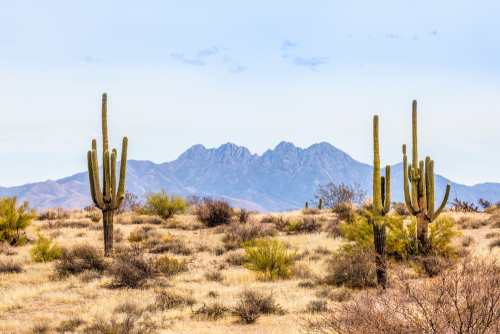
Real estate has always been a key part of our economy and growth. In the Southwest there’s plenty of demand for new land and developments, but one massive new problem.
Howard Hughes Corp. bought 37,000 acres in a mountainous Arizona valley for $600 million in 2021.
It aims to create 100,000 houses over the next half-century, alongside 55 million square feet of office buildings and other commercial properties.
Whether it’s finished depends on if there is enough water for residents, workers, and shoppers.
The Crisis in Arizona Has Become Extremely Serious
The Arizona Dept of Water Resources is studying a subterranean basin to assess if the groundwater supply will last 100 years.
Howard Hughes executives say there’s plenty, but if authorities disagree, the developer may have to cut back.
Arizona awaits the study’s conclusions.
Water availability is a problem when assessing statewide development plans. Tom Buschatzke, head of the Arizona Office of Water Resources, said the expansion will not stop but will go where water is.
If there’s insufficient groundwater for Teravalis, the developer may have to reduce its ambitions.
Howard Hughes Corp. purchased Douglas Ranch, Buckeye, Arizona & construction has started on a new MEGA community 3 times as large as NYC w/ 100,000 new homes. Water shortage, what water shortage?https://t.co/8hGqzzxn3D
— Michelle Valdez (@Michell06017336) September 28, 2022
This is Not An Isolated Problem
In Arizona and other regions of the West, population movements and decreasing water resources are clashing. Howard Hughes invests heavily as authorities scrutinize projects to guarantee they won’t dry up local water supplies.
Kathleen Ferris, a senior research scholar at ASU’s Kyl Center for Water Policy, said there isn’t enough water for millions of new homes.
Howard Hughes CEO David O’Reilly stated the corporation would use effective conservation procedures at Teravalis. Recycling water and drought-resistant landscaping are examples.
Several Howard Hughes executives said they had a water permit for the first village’s 7,021 housing plots and aim to get the remainder during the following few years.
In Arizona, demand for new housing due to population shifts and shrinking water supplies from a decadeslong drought are increasingly coming into conflict https://t.co/FTbUZGP5tk
— The Wall Street Journal (@WSJ) December 3, 2022
Wanted: Water
Western development initiatives have water challenges. A water pipeline disagreement between a Denver-area city and a bordering county is delaying house development in Colorado, builders claim.
Oakley, Utah, banned city water connections for new building permits in 2021 due to drought.
Recent increases in loan rates have reduced Arizona’s house demand. Phoenix-area property values surged 64% between January 2020 and Sept 2022 as more individuals migrated there during the epidemic, exceeding the countrywide 41% gain.
Local officials estimate Buckeye’s population might reach 1 million in 50 years.
At the same time, dryness has shrunk the Southwest’s most significant tributary, the Colorado River. State authorities say subsurface aquifers can’t be quickly recharged; therefore, farmers depend more on them.
Growth In Population Increases Pressure
In groundwater-dependent communities like Buckeye, pressure is high.
It’s in one of seven “active management areas” the state established in 1980 to limit water consumption in places like Phoenix and Tucson. In some places, builders must get a state certificate proving a 100-year water supply for new developments without depleting groundwater.
Buckeye, an agricultural community of 10,000 20 years ago, has grown to 110,000, and authorities estimate it might reach 1 million in 50 years. Buckeye’s 600 square miles include pristine desert, agriculture, suburbs, and strip malls.
The Department of Water Resources uncovered flaws in two Buckeye projects’ 100-year water plans in 2021. The government feared the projects’ anticipated groundwater demand wouldn’t be fulfilled, given existing usage and permissions.
Buckeye’s city borders include undeveloped deserts and new developments, and strip malls.
In the vicinity of the Howard Hughes and PulteGroup sites, there are around 1,600 feet of groundwater just above bedrock, contrasted with more than twice that closer to Phoenix, said hydrogeologist Marvin Glotfelty of Scottsdale, Ariz. Importing water would be expensive, he claimed.
Citing earlier research, Buckeye officials argue the state’s estimates are overly cautious. Buckeye’s water director, Terry Lowe, has said that the state’s position is slowing expansion.
Mr. Buschatzke stated Arizona is expanding supply. This year’s legislature approved $1 billion for desalination plants and recycling. These initiatives will promote additional growth, he added.
















